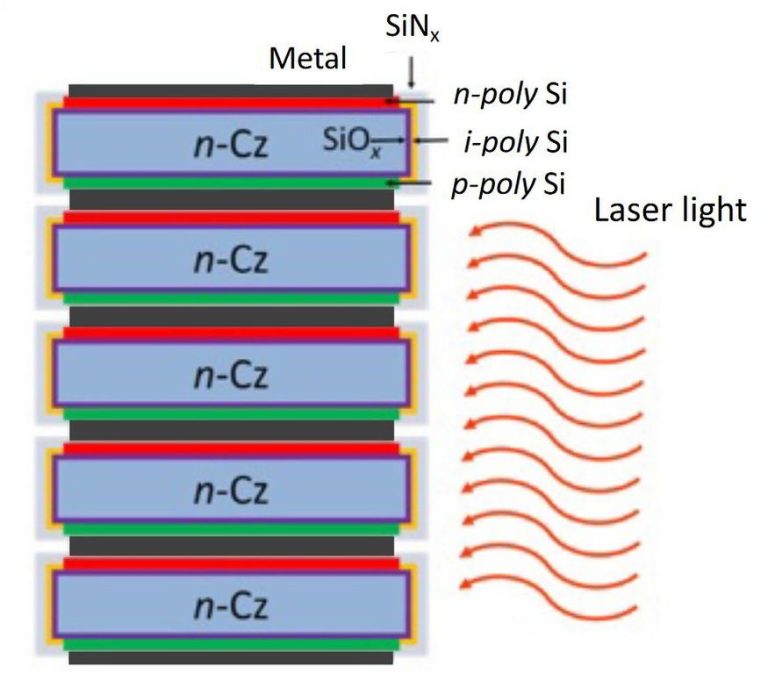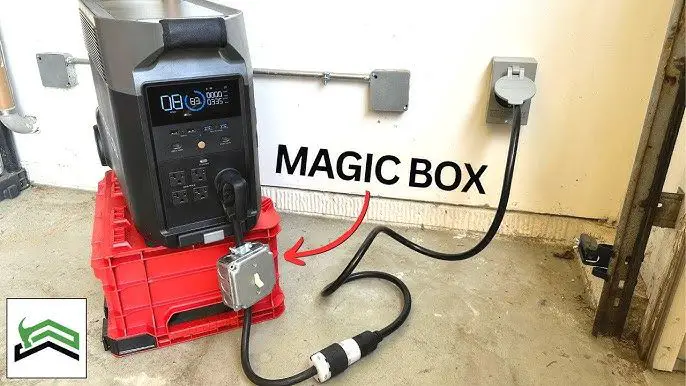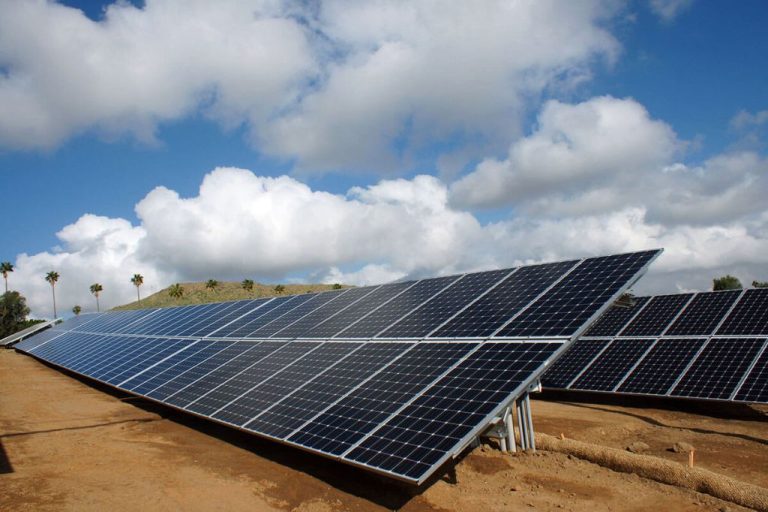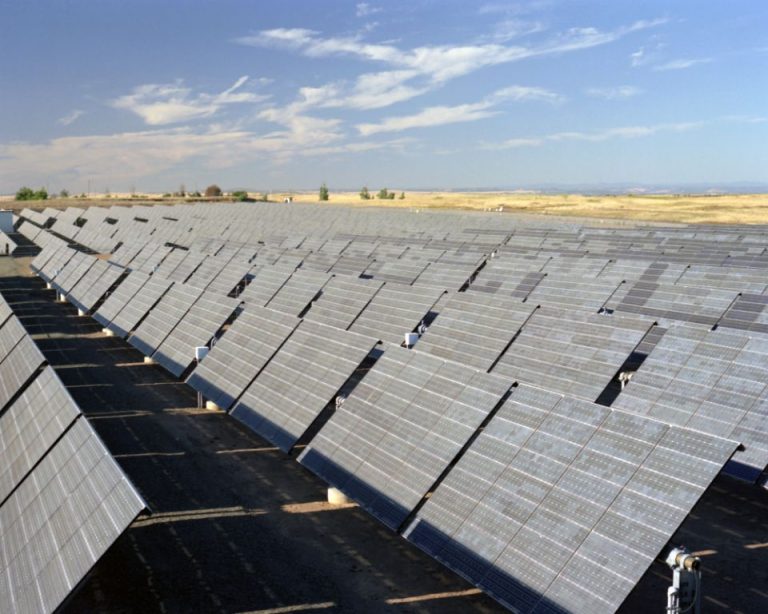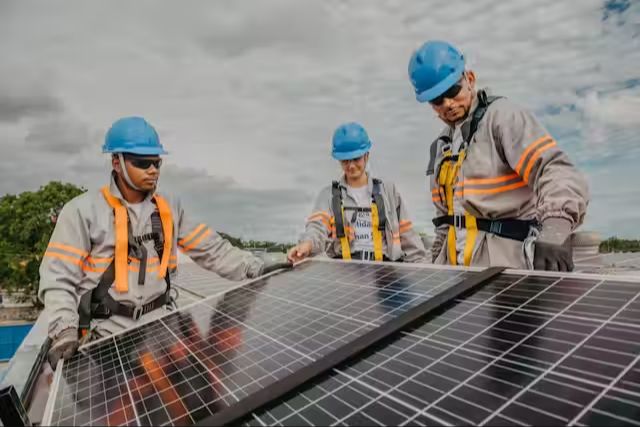How The Solar System Works?
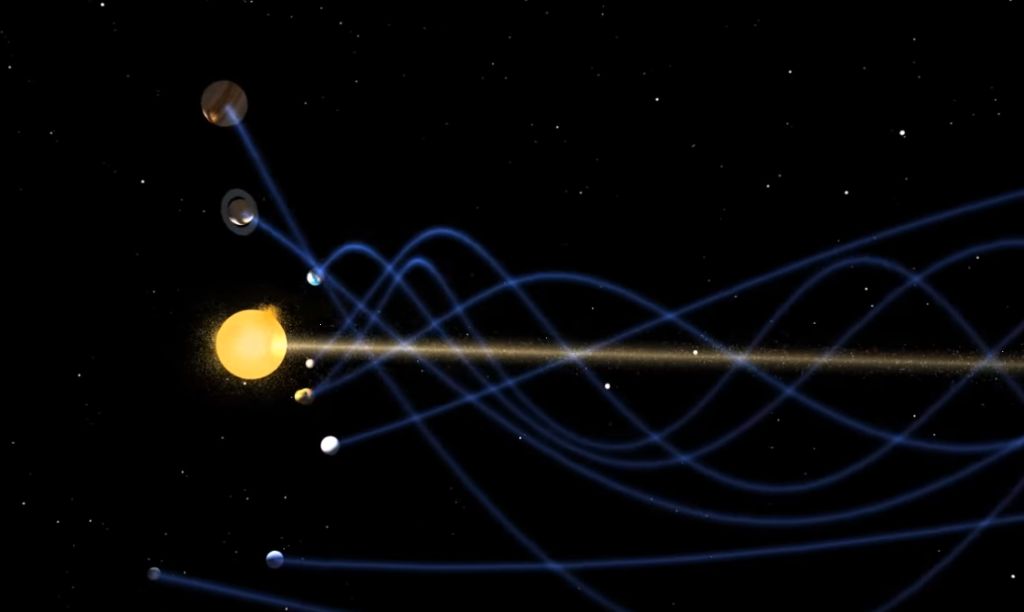
The solar system consists of the Sun and everything that orbits around it, including planets, moons, asteroids, comets and other objects. The Sun is a star at the center of our solar system and is responsible for holding everything together with its gravitational pull. The solar system formed about 4.6 billion years ago from a giant cloud of gas and dust known as the solar nebula. Most of the material from this cloud formed the Sun while the rest flattened into a disk that eventually formed the planets, dwarf planets, moons and other objects.
The planets in our solar system can be divided into two types – the inner rocky planets (Mercury, Venus, Earth and Mars) which are located closer to the Sun, and the outer gas giant planets (Jupiter, Saturn, Uranus and Neptune) which are much larger and located farther from the Sun. There are also five recognized dwarf planets in our solar system, the largest being Pluto. Our solar system contains over 200 moons orbiting various planets and asteroids.
Beyond the orbit of Neptune lies the Kuiper Belt, which contains a large number of icy objects and dwarf planets. Even farther out is the scattered disc, which includes distant icy bodies with highly eccentric orbits. The solar system also contains billions of comets located in the Oort cloud, which extends to about 50,000 AU from the Sun. Other smaller objects like asteroids and meteoroids also orbit the Sun.
Formation of the Solar System
The predominant theory for how the solar system formed is known as the solar nebula theory. According to this theory, the solar system began as a large cloud of dust and gas approximately 4.6 billion years ago. This cloud, known as the solar nebula, was made up mostly of hydrogen and helium and contained other elements like carbon, nitrogen, oxygen and silicates. Due to the forces of gravity, the solar nebula contracted and the gas and dust compressed. As it compressed, it began to spin and flattened into a protoplanetary disk with a bulge at the center. Most of the mass collected in the center, eventually igniting due to high pressure and temperature to become our Sun, leaving behind a protoplanetary disk surrounding it.
As the protoplanetary disk rotated and cooled, solid particles like dust grains began to condense out of the gas, eventually accumulating through electrostatic and gravitational forces into larger bodies called planetesimals. The planetesimals collided with each other and accreted into planetary embryos and eventually planets. The inner part of the protoplanetary disk was hotter, allowing only dense rocky material to condense. This led to the formation of terrestrial planets like Mercury, Venus, Earth and Mars. The outer part of the disk was cooler, allowing icy materials like water ice, methane, ammonia and other gases to condense. This is why the outer planets Jupiter, Saturn, Uranus and Neptune are gas giants, composed mainly of gases and ice.
Overall, the solar nebula theory provides the predominant framework for how our solar system formed from a cloud of dust and gas, eventually accreting through gravitational forces into planets orbiting a central star, our Sun. This process of planet formation from a spinning protoplanetary disk is thought to occur around other stars as well based on observations of protoplanetary disks around young stars in our galaxy.
The Sun
The Sun is the star at the center of our solar system and is responsible for the Earth’s climate and weather. The Sun is an average-sized yellow star comprised of 78% hydrogen and 21% helium (NASA). Through the process of nuclear fusion at its core, the Sun converts hydrogen into helium and produces enormous amounts of energy in the form of heat and light. This energy sustains life on Earth from over 93 million miles away.
The surface of the Sun has areas known as sunspots which are darker, cooler regions related to the Sun’s magnetic field. The number of sunspots on the Sun follows an 11 year cycle. When the Sun is most active, solar flares and coronal mass ejections blast radiation and charged particles toward Earth that can disrupt communications and power grids. This is known as space weather (Space.com).
The solar wind is a constant stream of charged particles released from the Sun at up to 900 km/s. It fills and defines the boundaries of our solar system. Astronomers continue studying the Sun to better understand stellar evolution and the life cycle of stars (Teach Starter).
The Planets
The planets in our solar system orbit the Sun in a predictable pattern. The order of the planets from the Sun is as follows:
- Mercury
- Venus
- Earth
- Mars
- Jupiter
- Saturn
- Uranus
- Neptune
Mercury is the smallest planet in our solar system and the closest to the Sun. It has a solid iron core and a heavily cratered surface. Mercury has no moons or rings.
Venus is often called Earth’s twin because of their similar sizes. However, Venus has a dense, toxic atmosphere that causes a runaway greenhouse effect, making it the hottest planet in our solar system. Venus rotates backwards compared to the other planets and has no moons.
Earth is the only planet known to harbor life. It has an atmosphere that protects life, with the right balance of gases like oxygen and carbon dioxide. Earth has one moon, oceans, and a magnetic field that blocks solar radiation.
Mars is known as the Red Planet due to the iron oxide on its surface. It has the tallest volcano in our solar system, Olympus Mons, along with polar ice caps made of water and carbon dioxide. Mars has two small moons called Phobos and Deimos.
Jupiter is the largest planet in our solar system. Its swirling clouds are made of hydrogen and helium with a possible solid core. Jupiter has over 75 moons and the Great Red Spot, a huge storm that has raged for over 300 years.
Saturn is known for its beautiful rings made of ice and rock particles. Saturn is mostly hydrogen and helium gas with a small rocky core. Saturn has over 150 moons, the largest being Titan, with lakes of liquid methane on its surface.
Uranus rotates on its side, unlike any other planet, with the poles facing the Sun for half its orbit. The atmosphere is made of hydrogen and helium with a rocky core. Uranus has 27 known moons as well as a ring system.
Neptune is similar to Uranus in composition but also contains frozen methane crystals that give it a striking blue color. It has strong winds and the fastest rotating atmosphere in our solar system. Neptune has 14 moons including Triton, which has icy geysers.
Dwarf Planets
A dwarf planet is a planetary-mass object that does not dominate its region of space and is not a satellite. Dwarf planets are recognized as a distinct class in 2006 when the International Astronomical Union (IAU) developed a definition for “planet” that excluded many objects in the Solar System previously classified as planets.
There are five recognized dwarf planets in the Solar System located in the asteroid belt and in the outer Solar System. They are Ceres, Pluto, Haumea, Makemake, and Eris. Ceres is located in the asteroid belt between Mars and Jupiter and is the only dwarf planet in the inner Solar System. The other four known dwarf planets are in the outer Solar System and are part of the Kuiper belt of icy planetary bodies beyond the orbit of Neptune. Some of the largest Kuiper Belt objects (KBOs) are likely dwarf planets, but only a small number have been confirmed. Many more dwarf planet candidates have been proposed by astronomers but not yet formally recognized.
The dwarf planet Ceres, at 940 km (580 mi) in diameter, is the largest object in the asteroid belt. Ceres is believed to be differentiated into a rocky core and an icy mantle. In 2006, Pluto was reclassified from a planet to a dwarf planet after the IAU redefined what constitutes a planet. At 2376 km (1477 miles) in diameter, Pluto is the largest dwarf planet. Unlike the terrestrial and giant planets, Pluto is composed mostly of rock and ice. Pluto orbits the Sun about 39 AU on average. The orbit is highly eccentric, and brings Pluto as near as 29.7 AU from the Sun, and as far as 49.5 AU from the Sun. Pluto has five known moons, the largest called Charon.
Eris is the second-largest dwarf planet at 2326 km (1445 miles) in diameter and 27% more massive than Pluto. Eris was discovered in 2005 orbiting the Sun at a distance of 67 AU, making it the most distant object yet observed in the Solar System. Makemake was discovered in 2005 and is currently the third-largest dwarf planet at approximately 1500 km (930 mi) in diameter. Haumea was discovered in late 2004 and is roughly the size of Makemake and Eris. Haumea has an egg-shaped body caused by its rapid rotation.
The number of dwarf planets beyond the orbit of Neptune is not precisely known, but is estimated to exceed 100. The classifications of many of these distant KBOs have yet to be determined. Wikipedia
Moons
Moons are natural satellites that orbit planets and some asteroids. There are over 200 known moons in our solar system. The four largest planets – Jupiter, Saturn, Uranus and Neptune – have extensive moon systems. Jupiter has the most moons, with over 80 confirmed moons. Saturn has over 80 confirmed moons as well, including Titan, the second largest moon in the solar system after Jupiter’s Ganymede. Uranus has 27 known moons, and Neptune has 14 known moons. Earth only has one moon, called the Moon or Luna. Mars has two small moons called Phobos and Deimos.
Some of the most notable moons in our solar system include:
- Io – Jupiter’s innermost large moon, with hundreds of active volcanoes.
- Europa – Jupiter’s moon with a global ocean beneath an icy crust, and potential for life.
- Titan – Saturn’s largest moon, and the only moon with a substantial atmosphere.
- Enceladus – Saturn’s moon with geysers erupting from its southern hemisphere.
- Triton – Neptune’s large retrograde moon likely captured from the Kuiper belt.
The many moons of our solar system provide insights into the formation and evolution of planetary systems. Moons like Europa and Enceladus are also prime targets in the search for potential extraterrestrial life in our solar system.
Asteroids
Asteroids are rocky objects that orbit the Sun but are too small to be considered planets. The majority of known asteroids are found in the main asteroid belt, located between the orbits of Mars and Jupiter. This belt contains millions of asteroids, ranging in size from just a few feet across to almost 1,000 km in diameter.
The asteroid belt likely contains millions or even billions of asteroids over 1 kilometer in size, as well as countless smaller ones. According to NASA, as of 2022 there are over 1 million known asteroids in our solar system, but estimates suggest the total asteroid population may be up to several million.
Most asteroids are composed of rock and metals, making them stony or metallic in composition. The three most common types of asteroids are C-type (carbonaceous), S-type (silicaceous), and M-type (metallic). Some asteroids contain a mix of these materials.
Asteroids orbit the Sun just like planets, but have more elliptical and tilted orbits. Near-Earth asteroids (NEAs) have orbits that pass close to the Earth’s orbit, within 120 million miles. asteroids whose orbits actually cross Earth’s orbit are known as Earth-crossers.
Trojan asteroids orbit at the Lagrange points of other planets, either ahead of or behind the planet. The Jupiter trojans are by far the most numerous, with over 7,000 identified. Trojan asteroids associated with Mars and Neptune have also been discovered.
While most asteroids are found in these stable populations, collisions and gravitational perturbations occasionally alter their orbits into Earth-crossing orbits. Asteroid impacts are an ongoing process that have played a major role in shaping the evolution of the planets.
Comets
Comets are small, icy objects made of dust, rock, and frozen gases that orbit the Sun. When a comet’s orbit brings it close to the Sun, it heats up and spews dust and gases into a giant glowing head larger than most planets. The comet also develops two types of tails: an ion tail and a dust tail. Ion tails are charged particles pushed away from the Sun by the solar wind. Dust tails are made of dust particles left behind in the comet’s orbit. Comets originate in two regions of the solar system. Short-period comets from the Kuiper Belt beyond Neptune’s orbit contain ice and rock. Long-period comets from the Oort cloud on the edge of the solar system are almost pure ice.
The main parts of a comet are the nucleus, coma, and tails. The nucleus is a solid chunk of ice and frozen gases at the center about the size of a small town. When warmed by the Sun, frozen materials in the nucleus turn into an expanding cloud called the coma. Comet tails form when particles from the coma stream away from the Sun. The most famous comet is Halley’s Comet, which orbits the Sun every 75-76 years. It was last seen in 1986 and will return to the inner solar system in 2061.
Sources:
https://www.space.com/comets.html
Meteoroids and Meteorites
Meteoroids are small pieces of space rocks, ranging in size from dust grains to small asteroids, that orbit the Sun. When a meteoroid enters Earth’s atmosphere at high speed, it burns up and vaporizes due to friction with the air, creating a streak of light known as a meteor, or “shooting star.” If a meteoroid survives passage through the atmosphere and lands on Earth’s surface, it becomes known as a meteorite.
Some of the most spectacular meteor showers occur annually when Earth passes through the trail of debris left by comets. For example, the Perseid meteor shower in August comes from debris dropped by the comet Swift-Tuttle. Other notable meteor showers include the Leonids in November and the Geminids in December.Scientists find two new minerals in the 15000 kg, 9th largest meteorite to hit Earth
Most meteorites that fall to Earth are rocky in composition, but some contain significant amounts of iron and nickel. Analysis of meteorites provides insights into the early formation of the Solar System over 4.6 billion years ago. Some rare meteorites contain organic compounds, supporting the theory that meteorite impacts may have supplied the early Earth with materials and water needed for life to emerge.
Some meteorite impacts on Earth have caused major devastation, such as the meteorite impact 66 million years ago linked to the extinction of dinosaurs. However, most meteorites burn up in the atmosphere, and those that survive to reach the ground are slowed enough to only create small impact craters. Continued research on meteorites gives clues about the formation and geologic history of both asteroids and planets.
Exploration of the Solar System
Humans have explored space since the 1960s when the first human, Soviet cosmonaut Yuri Gagarin, orbited the Earth in 1961 aboard the Vostok 1 spacecraft (Source). Since then, humans have explored various celestial bodies in the solar system including the Moon during the Apollo missions, Venus with spacecraft like Venera 13, and Mars with rovers like Perseverance. Future missions aim to send humans back to the Moon through NASA’s Artemis program and eventually to Mars. NASA also plans to send probes to icy moons like Europa and Enceladus to search for signs of habitability. Other space agencies have plans to explore Mercury, Saturn, asteroids like Psyche, and the dwarf planet Pluto. Some habitable zone exoplanets that might harbor life, like Proxima Centauri b, are also of high interest for future exploration through proposed spacecraft like Starshot.

